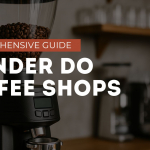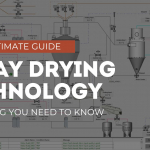Introduction: Understanding the Price Tag of Professional Coffee Grinding Equipment
When setting up or upgrading a coffee business, the sticker shock of commercial coffee grinders can be overwhelming. While consumer models might cost $200-500, commercial grinders often start at $1,000 and can exceed $3,500 for high-end models. This significant price difference raises a legitimate question: why are commercial coffee grinders so expensive?
This article breaks down the factors that contribute to commercial grinder pricing, helping cafe owners, roasters, restaurant managers, and serious coffee enthusiasts understand the value behind the investment. By examining the engineering, materials, performance requirements, and business considerations, we’ll provide a clear picture of what you’re actually paying for—and why it might be worth every penny.
Consumer vs. Commercial Coffee Grinders: What’s the Difference?
Before diving into specific cost factors, let’s establish a baseline understanding of price ranges:
| Grinder Type | Price Range | Daily Capacity |
|---|---|---|
| Consumer/Home | $100-500 | 1-20 doses |
| Prosumer | $500-1,000 | 20-50 doses |
| Entry-Level Commercial | $1,000-2,000 | 50-300 doses |
| Mid-Range Commercial | $2,000-3,000 | 300-500 doses |
| High-End Commercial | $3,000-6,000+ | 500+ doses |
The price differential isn’t arbitrary—it reflects fundamental differences in design, capability, and intended use. While a home grinder might prepare coffee for 1-4 people a few times daily, commercial grinders must deliver consistent results hundreds of times a day, every day, for years.
What Materials and Build Quality Make Commercial Grinders Cost More?
Premium Burr Design and Materials
At the heart of any coffee grinder are the burrs—the cutting surfaces that grind coffee beans. Commercial grinders utilize:
- Larger burr diameters: Typically 64-98mm compared to 40-50mm in consumer models
- Superior materials: Often made from hardened or tool steel, or even titanium-coated steel
- Precision manufacturing: Machine-cut to micron-level tolerances
- Advanced geometry: Designed for optimal particle distribution and minimal heat generation
A set of premium commercial burrs alone can cost $200-400, whereas consumer burrs might cost $30-75. This difference reflects not just material costs but the precision engineering required for commercial applications.
Motor Construction and Power Requirements
Commercial grinders feature:
- High-torque motors: Often 500-900 watts compared to 150-300 watts in home models
- Continuous duty ratings: Designed to run for extended periods without overheating
- Direct drive systems: More durable than geared systems in lower-cost models
- Cooling systems: To prevent heat transfer to the beans during high-volume grinding
These robust motors require more expensive components, copper windings, and thermal protection systems that significantly increase manufacturing costs.
Frame and Chassis Durability
Commercial grinders must withstand constant use in busy environments:
- Heavy-gauge metals: Often using die-cast aluminum, stainless steel, or zinc alloys
- Vibration damping: Specialized mounts and gaskets to reduce operational noise and wear
- Weight: Often 20-30 pounds heavier than home models to provide stability
- Finish quality: Commercial-grade powder coating or anodizing for resistance to wear and cleaning chemicals
How Do Precision and Consistency Requirements Affect Commercial Grinder Pricing?
Particle Size Distribution Control
For commercial coffee preparation, consistency is non-negotiable:
- Stepless adjustment mechanisms: Allowing for infinite grind size adjustments
- Micrometric adjustment systems: Providing precise control over particle size
- Retention minimization: Advanced designs to reduce the amount of ground coffee retained within the grinder
- Anti-clumping technology: To ensure even extraction during brewing
These precision components require tight manufacturing tolerances, specialized materials, and extensive testing—all of which add to the final cost.
Temperature Management Systems
Heat is the enemy of coffee flavor. Commercial grinders incorporate:
- Heat dissipation fins: To draw heat away from the grinding chamber
- Ventilation systems: To maintain stable grinding temperatures
- Thermally isolated grinding chambers: To prevent motor heat from affecting the beans
- Temperature monitoring: In advanced models, active monitoring to maintain optimal conditions
Why Does Production Capacity Drive Up the Price of Commercial Grinders?
Throughput and Speed Capabilities
A busy cafe might need to produce dozens of espressos per hour. This requires:
- High-speed grinding: Typically 2-3.5g of coffee per second for commercial models
- Larger bean hoppers: Usually 1-3 pounds compared to 8-12 ounces in consumer models
- Dosing systems: Precise measurement to ensure consistent shot preparation
- Queue management: Features that allow baristas to handle multiple orders efficiently
Duty Cycle and Continuous Operation
Commercial grinders are engineered for:
- All-day operation: Often running continuously during business hours
- Peak period performance: Handling rush periods without degradation in quality
- Rapid cooling: Recovering quickly between grinding sessions
- Minimal downtime: Design focused on continuous service capability
What Makes Commercial Coffee Grinders More Durable and Long-Lasting?
Component Lifespan Engineering
The expected service life dramatically affects design and materials:
| Component | Consumer Lifespan | Commercial Lifespan |
|---|---|---|
| Burrs | 300-600 lbs of coffee | 1,500-2,500 lbs of coffee |
| Motor | 3-5 years with daily use | 7-10+ years with continuous use |
| Adjustment mechanism | 5,000-10,000 adjustments | 50,000+ adjustments |
| Electronics | 3-5 years | 5-10+ years with commercial-grade components |
This extended lifespan requires more robust materials, redundant systems, and serviceability considerations that increase manufacturing costs.
Maintenance Accessibility and Serviceability
Commercial grinders are designed for:
- Easy burr access: Quick maintenance without complete disassembly
- Modular components: Allowing for replacement of specific parts rather than entire systems
- Tool-free service points: Enabling routine maintenance without specialized equipment
- Diagnostic capabilities: In advanced models, self-diagnostics to identify maintenance needs
What Advanced Features Contribute to Commercial Grinder Costs?
Programmable Dosing and Shot Control
Modern commercial grinders include:
- Programmable dose settings: Storing multiple dose weights for different coffee offerings
- Weight-based dosing: In premium models, grinding to specific weight rather than time
- Shot counting: Tracking usage for inventory and maintenance planning
- User profiles: Allowing multiple baristas to save their preferred settings
User Interface and Control Systems
The operational requirements of a commercial environment necessitate:
- Durable interfaces: Often using commercial-grade buttons or touchscreens
- Barista-friendly ergonomics: Designed for high-volume, repetitive use
- Network connectivity: In advanced models, integration with shop management systems
- Software development: Sophisticated control systems requiring significant programming
How Do R&D, Quality Control, and Support Infrastructure Affect Pricing?
Research and Development Investment
Commercial equipment manufacturers invest heavily in:
- Engineering teams: Dedicated to commercial product development
- Materials research: Testing new alloys and compounds for durability
- User experience studies: Understanding the needs of professional baristas
- Competitive testing: Benchmarking against other commercial offerings
These R&D costs are amortized across a relatively small number of units compared to consumer products, increasing per-unit costs.
Quality Control and Testing Procedures
Commercial grinders undergo rigorous testing:
- Endurance testing: Often grinding thousands of pounds of coffee before release
- Environmental testing: Performance verification under various conditions
- Stress testing: Simulating years of use to identify potential failure points
- Certification processes: Meeting various international standards for commercial equipment
Warranty and Service Support
Professional coffee equipment requires:
- Extended warranties: Typically 1-3 years compared to 6-12 months for consumer models
- Service networks: Maintaining qualified technicians in major markets
- Parts inventories: Stocking components for quick repairs
- Technical support: Providing expertise for troubleshooting and maintenance
This support infrastructure represents a significant ongoing cost that manufacturers must factor into pricing.
Why Invest in an Expensive Commercial Grinder? The Business Case
Impact on Coffee Quality and Customer Satisfaction
The grinder is arguably the most critical piece of equipment affecting coffee quality:
- Extraction consistency: Directly impacts flavor profile and customer experience
- Drink repeatability: Ensures customers get the same experience every visit
- Flavor clarity: Higher-quality grinders produce cleaner flavor separation
- Adaptation capability: Allows for adjustments based on bean age, humidity, and seasonal variations
Throughput and Operational Efficiency
During peak service times:
- Speed of service: A high-quality grinder can reduce drink preparation time by 15-30 seconds
- Workflow efficiency: Reliable operation allows baristas to maintain rhythm
- Error reduction: Consistent dosing reduces waste and remakes
- Staff satisfaction: Quality equipment improves the working experience for employees
Long-Term Cost Analysis: Price Per Cup Over Equipment Lifetime
When analyzed over their operational lifetime:
| Grinder Category | Initial Cost | Expected Lifetime | Daily Coffees | Cost Per Coffee |
|---|---|---|---|---|
| Entry-Level Commercial | $1,500 | 5 years | 200 | $0.004 |
| Mid-Range Commercial | $2,500 | 7 years | 300 | $0.003 |
| High-End Commercial | $4,000 | 10 years | 400 | $0.0027 |
When viewed through this lens, the premium for higher-quality equipment becomes much more reasonable.
The Hidden Costs of Downtime
Lower-quality equipment carries significant risks:
- Lost sales: Equipment failure during peak hours can cost hundreds in immediate revenue
- Customer dissatisfaction: Inconsistent quality or service delays damage reputation
- Emergency repair costs: Rush service calls often carry premium pricing
- Training disruption: Staff must adapt to replacement equipment
How to Evaluate Value vs. Price When Selecting Commercial Grinders
Questions to Ask When Assessing Commercial Grinder Value
- What is your daily volume requirement?
- Under 100 drinks: Entry-level commercial may suffice
- 100-300 drinks: Mid-range commercial recommended
- 300+ drinks: High-end commercial justified
- How critical is grind consistency to your business model?
- Specialty coffee focus: Invest in premium grinding precision
- Standard coffee program: Mid-range consistency may be adequate
- What is your maintenance capability?
- In-house technical expertise: May manage with less expensive equipment
- Limited technical resources: Premium equipment with support contracts often more economical
- What is your business growth trajectory?
- Rapid expansion plans: Invest in equipment that exceeds current needs
- Stable operation: Match equipment precisely to current requirements
The True Components of Value in Commercial Grinders
- Productivity enhancement: Time saved in daily operations
- Waste reduction: Less coffee discarded due to inconsistency
- Staff efficiency: Reduced training time and error correction
- Customer retention: Consistency that builds loyalty
- Brand perception: Equipment that reflects your quality standards
How Can You Manage Commercial Grinder Costs?
Alternative Acquisition Strategies
- Certified Refurbished Equipment
- Savings of 30-50% from new pricing
- Often includes updated components and renewed warranties
- Best sourced from manufacturer-authorized programs
- Financing Options
- Equipment-specific loans with favorable terms
- Section 179 tax deductions for business equipment
- Bundling with other cafe equipment for package financing
- Leasing Programs
- Predictable monthly costs without large capital outlay
- Maintenance often included in premium leasing programs
- Upgrade paths to newer models
Preventative Maintenance to Extend Equipment Life
- Regular burr inspection and replacement: Following manufacturer schedules
- Motor and drive system maintenance: Preventative rather than reactive
- Professional servicing: Annual check-ups from qualified technicians
- Staff training: Proper daily cleaning and operation procedures
How to Identify Truly Premium Grinders vs. Overpriced Options
Signs of Quality Worth Paying For
- Thermal stability features: Indicate attention to coffee quality
- Burr design patents or innovations: Reflect R&D investment
- Serviceability features: Show long-term thinking in design
- Industry adoption: Widespread use by respected coffee businesses
Red Flags That Suggest Poor Value
- Marketing-driven features: Flashy additions without functional benefit
- Proprietary components: May indicate future service difficulties
- Limited adjustment range: Restricts coffee program flexibility
- Excessive electronic complexity: Can increase failure points
Conclusion: Making the Right Commercial Grinder Investment
Commercial coffee grinders represent a significant investment because they’re engineered to deliver consistent, high-quality results thousands of times in demanding commercial environments. The materials, engineering, performance capabilities, and support infrastructure all contribute to higher costs compared to consumer equipment.
However, when evaluated as a business investment rather than a purchase, the value proposition becomes clear. A quality grinder directly impacts product quality, operational efficiency, and long-term costs—all factors that affect business profitability.
By understanding what drives commercial grinder pricing, you can make an informed decision that balances initial cost against long-term value, ensuring your business has the equipment it needs to succeed in the competitive coffee market.
Decision Flowchart: Determining Your Commercial Grinder Budget
- Start with daily volume
- <100 drinks → $1,000-2,000 range
- 100-300 drinks → $2,000-3,500 range
-
300 drinks → $3,500+ range
- Consider your coffee program
- Basic coffee only → Lower end of range
- Mixed specialty/standard → Middle of range
- Premium specialty focus → Upper end of range
- Evaluate operational factors
- Multiple grinders needed → May justify lower individual cost
- Single grinder for all service → Invest in higher-end model
- Staff expertise level → Higher expertise may enable lower-cost equipment
- Assess business stability
- New business → Consider leasing or certified refurbished
- Established business → Direct purchase of new equipment
- Growing business → Investment in equipment that exceeds current needs
- Factor in service availability
- Limited local service → Premium equipment with robust design
- Strong local service network → Wider range of options viable




